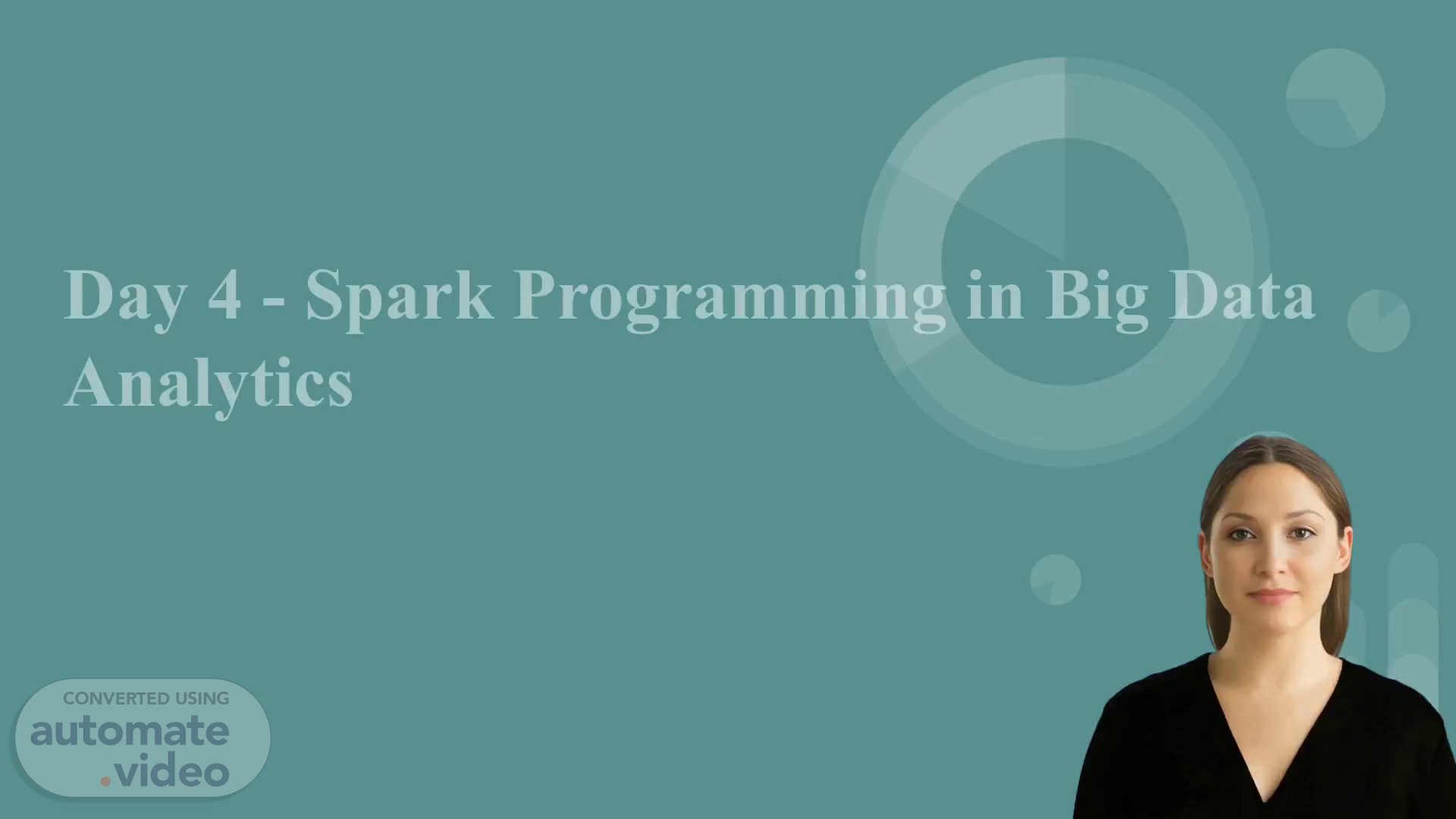
Day 4 - Spark Programming in Big Data Analytics(session-1)
Scene 1 (0s)
[Virtual Presenter] Good morning everyone! Today, we'll be exploring Apache Spark and how it is used instead of Hadoop MapReduce. We'll examine how Spark utilizes parallel programming and RDDs to achieve faster data processing and analysis. Let's get started!.
Scene 2 (20s)
[Audio] Tomorrow, we will introduce Apache Spark technology and discuss why it is a popular choice for Big Data analytics. Apache Spark is an open-source, distributed computing system created to process and analyze large datasets. It is capable of handling real-time data effectively and offers low latency computing. Furthermore, it allows developers to process data in both batch and interactive modes, whereas Hadoop MapReduce cannot. We will compare the key differences between Hadoop and Spark and understand how Spark can enhance efficiency and accuracy..
Scene 3 (1m 1s)
[Audio] We will be discussing parallel programming in Spark and the Resilient Distributed Datasets (RDDs), which are the fundamental data structure in Spark. Partitioning data and computation across a cluster of machines can get faster and more efficient results. RDDs allow us to transform and act on data in parallel, resulting in improved data processing and analysis. Let's begin!.
Scene 4 (1m 30s)
[Audio] We'll be focusing on Spark Programming in Big Data Analytics, exploring the different types of transformation available such as Map, Filter, FlatMap, Union and Intersection. I'll go into detail about what they are and how to use them in your code. Let's get started!.
Scene 5 (1m 50s)
[Audio] We will discuss the Actions within Spark, which enable us to perform computations on a dataset and subsequently return a result to the driver program. We will examine the workings of some of the most widely used Actions, such as collect(), count(), first(), take(n), saveAsTextFile(path) and foreach(func), when applied in Spark..
Scene 6 (2m 14s)
[Audio] Exploring the benefits and considerations of parallel programming in Spark is on the agenda. Parallelism in Spark can dramatically increase the speed of data processing, making it ideal for big data workloads. Furthermore, it offers excellent fault tolerance due to parallel processing. However, it is recommended to reduce data shuffling as it could have a negative impact on performance. Finally, resource management must be efficient to guarantee optimal parallelism..